eCommerce Business Models for Retail
Ecommerce Business Plan Strategy
An e-commerce business can leverage tools and technologies in the digital age and the modern marketplace. Worldwide, e-commerce sales are pegged to grow by USD 4 trillion in 2020 alone, according to e-Marketer. For emerging economies like China and Asia, e-commerce retail has the potential for phenomenal growth.
The concept of e-commerce came about as retailers seek new ways to expand sales globally. It is estimated 2.14 billion international buyers will be digital in 2021.
Benefits of E-commerce brand
An E-commerce brand can benefit retail businesses in multiple ways.
#1 No Limits or Boundaries
Physical stores are limited by the geographical areas they service. An e-commerce website, on the other hand, ensures the global audience can be targeted. With the advent of smartphone-friendly stores, the whole world of opportunities is available for even the smallest of retailers. Technologies and online marketplace models are the ultimate game-changers for creating a level playing field.
#2 Cost Efficiency
One of the most tangible benefits of e-commerce for retail business is cost-efficiency. The cost can be passed onto customers in the form of discounted prices.
Organic search engine traffic, social media traffic, and PPC are some channels that can be affordable. The process of billing, checkout, payments, inventory management besides other operational processes reduce the number of employees required to run an e-commerce establishment.
#3 Easy Accessibility
E-commerce merchants can thrive through feature-rich, future-proof fully functional virtual storefronts and e-commerce development strategies.
E-commerce sites and retail outlets offer intuitive navigation and prompt sales. Customers can even filter preferences or repeat orders as sites remember customer shopping lists and requirements.
#4 Value for Money Shopping
Virtual stores can easily be accessed and e-commerce facilitates comparison shopping. This generates value for the customer.
Deals, bargains, coupons and group purchases offer tremendous value. Online shopping has made it convenient to avail deep discounts through the click of a mouse or a swipe of a smartphone.
#5 24/7 Availability
For e-commerce retailers targeting customer, niches are far easier with an online presence. The website also serves as a 24/7 marketing tool 365 days of the year. Physical retail stores pay for the location, store signage, design, sales equipment, and purchase inventory. E-commerce stores only pay hosting fees.
#6 Retail Strategy Personalization
Website personalization remains one of the biggest online business advantages for enhancing the shopping experience. Customers can also be retargeted and upsells can be personalized for raising average order values.
#7 Retargeting Effectively Through Data-Driven Approach
Retargeting or remarketing to customers makes online marketplaces a profitable option. Through lead magnets or pop-ups, a business can collect email addresses and continue marketing to customers once the sale has been made. Learning about sales promotions is less invasive for customers. But e-commerce businesses can also gain access to customer data easily.
The best advantage of e-commerce sites is that businesses can access vital information for tailoring brand-building and marketing strategies. As businesses grow, employees can be hired to help with order processing.
#8 Easily Scalable Businesses
A benefit of e-commerce is that businesses can be quickly scaled. The ad campaign can be easily extended or store portals expanded to reflect the growing reach of the business. With e-commerce, organic traffic and sales can really grow. A brick-and-mortar retailer cannot optimize store design to drive traffic or sales so cost-efficiently. Generating value for the customer, e-commerce stores help customers to avail products quickly and easily.
#9 Less Investment, More ROI, Organic Growth
E-commerce operations cut down the cost of running your retail business by as much as 60%. E-commerce marketing is also extremely cost-efficient. E-commerce storefronts offer flexibility and services that are available 24/7. Online marketplaces excel at services like sales support, chat support, recommendations and is a platform available for customers globally and 24/7.
E-commerce retail incurs less investment and offers huge returns. E-commerce businesses can cut down on rent, infrastructure, services, workforce and maintenance costs. Webstores are extremely affordable making it agile & easy to achieve fast organic growth.
#10 Convenience
Customers can access online stores any time, anywhere. An e-commerce outlet also reduces hiring and training costs for human capital and resources. E-businesses and e-tailers can reach more customers, moving past references and relationship building to get unique visitors for specific products or services online.
#11 Real-Time Feedback
E-commerce stores also provide platforms for real-time feedback and interactions. Testimonials are equally essential for building positive reviews and creating strong brand value, as well.
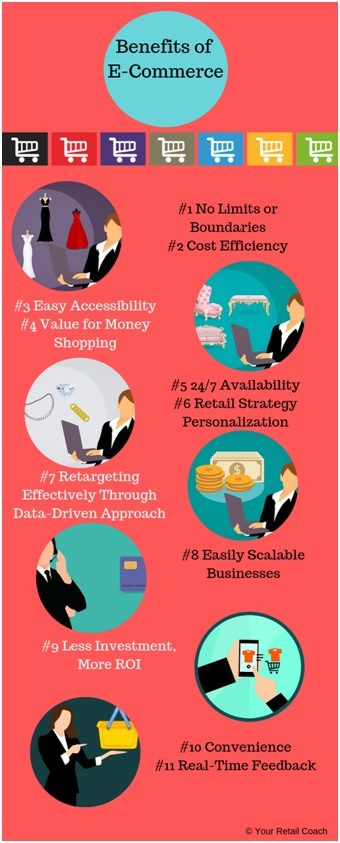
Future of E-Commerce
Since it was introduced in the 90s, the e-commerce business has only grown. The e-commerce industry shows customer expectations and evolving technologies lead to retail innovations across the board from retail giants to emerging online brands.
#1 Smart Devices Lead the Future
Devices are at the center of the shopping revolution. As smartphones and other smart devices become the domain of the smart shopper, the retail experience is geared towards personalization and tailor-made experiences.
An estimated 45 percent of all e-commerce purchases will be on smartphones by 2021. This will generate USD 284 billion in revenue. Further, a massive majority of buyers use mobile devices to research products.
#2 End to end Shopping Experience
Buyers in the e-commerce sphere look for the complete, end-to-end shopping experience on different devices. This ensures a seamless shopping experience.
While emerging markets like India, Brazil, Russia, and South Africa are poised to play a major role in the future of e-commerce, China is an Asian powerhouse surging ahead. With Alibaba and Tencent, its e-commerce titans match international players like Amazon and eBay.
#3 Growing Access of Emerging Markets
It’s also estimated close to 3 billion potential buyers from such emerging markets will access e-commerce stores by 2022.
There are many opportunities for new e-commerce brands looking to cater to emerging markets and audiences in such marketplaces.
#4 Growth of Ecommerce Model
The growth of online shopping is outpacing other conventional or traditional retail models. As e-commerce businesses tap new marketing media, the quintessential online retail experience will focus on revolutionizing the connection between the brand and its target audience.
#5 Trends and Technologies
For success in a competitive and overcrowded marketplace, e-commerce companies have to hone shopping experiences for customers. New algorithms are showing the way for machine learning to understand the e-commerce customer better.
Along with the technologies and trends, e-commerce businesses need to optimize their operational strategies. An integral part of the e-commerce business is building a direct relationship between the customer and the brand.
As digitally native, vertically integrated brands take over, online brands are all about selling products and services through their own portals and virtual storefronts.
#6 Rapid Growth
E-commerce brands are growing three times faster than average brick-and-click e-tailers. Digital brands are developing a connection with the customer through communication via email or on social.
As new technologies like AI and AR integrate into the e-commerce experience, the focus is on more personal omnichannel experiences that surprise and delight customers shopping online.
E-commerce is not eliminating the need for brick-and mortar-retail. The symbiotic existence of both models heralds a new age in retail businesses where the focus is on reaching and personalizing the shopping experience for the customer.
Why YRC?
Through retail consultancy Your Retail Coach’s detailed e-commerce strategies, your online retail brand can evolve to assist the customer’s personalized experiences and learn from customer conversations.
As e-commerce customers become discerning and increasingly tech-savvy, they expect a seamless digital retail experience. To win customers, e-commerce brands have to move past best prices and deep discounts. This is why retail strategies from specialists at Your Retail Coach (YRC) can help your e-commerce business to thrive and flourish.
While immediacy and quick turnaround are at the heart of e-commerce, other expectations customers have must be met. Anytime, anywhere shopping, proactive client support and no disconnect from your customer or client are absolutely essential.
If you are a B2B or B2C brand looking to join the online selling bandwagon or build a booming e-commerce business from scratch, start by talking with Your Retail Coach Expert to gain viable e-commerce strategies for business growth and the best customer experience. As an e-commerce business service provider, YRC is an e-commerce consultant your business can rely on.
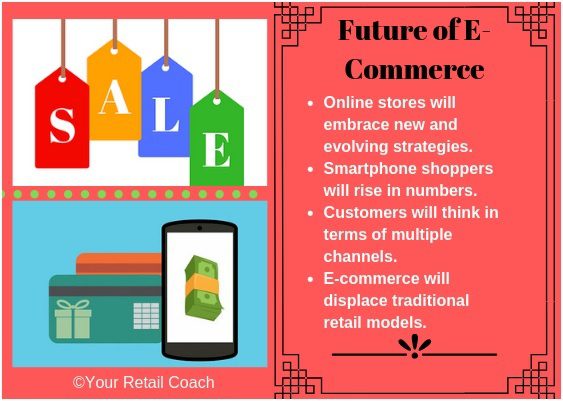
About E-Commerce
Worldwide, the entire population is 7.7 billion. This means e-commerce retail is the choice of 28% of all the shoppers across the globe. If your retail business is thinking of going online, now is the best time to start.
Clearly, e-commerce business models are taking over the retail market. This will make up 17.5% of retail sales globally by 2021.
E-commerce is expanding in every direction. It has become an integral part of the consumer experience internationally.
One of the prime reasons shoppers prefer online retailers is the 24/7 availability of goods. Ability to compare prices and get lower prices or save time are other reasons why the importance of e-commerce in business is growing.
Without the costs of maintaining physical stores or massive inventories, e-commerce businesses can keep overheads low and offer solid ROI and profits that multiply.
Online e-commerce retailers are building trust and credibility among shoppers by working on security, confidentiality, convenience, and easy accessibility.
Mobile e-commerce is projected to reach 72.9% by 2021.
While different customer segments interact with online e-commerce stores differently, what sets successful e-commerce players apart is a clearly defined market or target audience.
Online shopping is projected to accelerate at a quick pace, with 56% of Gen-X and 67% of millennial buyers are likelier to shop online. Mobile commerce registered a growth of 300% over the past years, with e-commerce revenue models pegged at USD 700 billion in developed markets like the US alone.
With online sales projected to hit USD 4878 billion in recent years, even brick-and-mortar brands are transitioning to the e-commerce model. If your retail outlet seeks to go global, the e-commerce model allows new ways to expand the business.
With cost-efficiency and global reach, an online presence is a high-value investment. It works for businesses seeking to grow their online visibility and market reach.
Digital marketing and selling models that deploy e-commerce gather, use and synthesize customer data and information more easily than conventional channels. E-commerce stores can track buying habits and target customers with precision and accuracy. This offers greater chances to personalize promotions.
There are many opportunities to personalize promotions and other offerings about customers integrated automatically to the system. Segmenting and personalizing based on locations, spending habits or cart abandonment rates is important. Cross-selling and upselling also become easier as market intelligence is fine-tuned to customer requirements.
Scaling an e-commerce business is the key to seeing a customer-base expand and grow. When offerings are seasonal, marketing and inventory needs can be adjusted in accordance with this as well.
For tech-savvy, digital natives, modern shopping is all about convenience. An e-commerce business that understands this will be a formidable brand in the competitive marketplace.
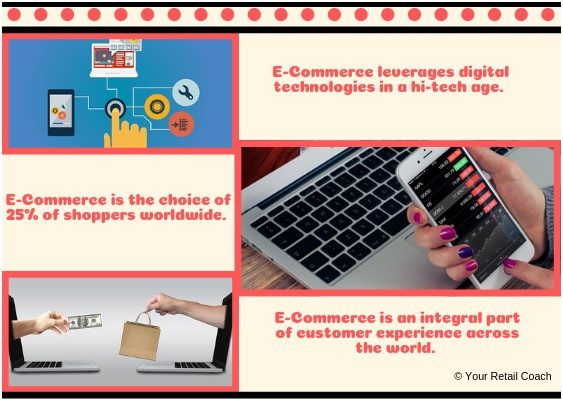
CASE STUDIES
If your looking to Start E-commerce Business refer following links: Setup E-commerce Business, Setup Dark Store
Services Offered for
E-Commerce Retailers:
Get Advice for Business Consulting
Related Blogs
Making the most out of the festive season shopping: A Customer Perspective for Retailers
Decoding the Festive Shopping Spree For us, as customers, the festive season is a licence to spend. The vibes of festivity ushers with joy and a sense of celebration. This elevated mood often turns into an enhanced willingness to spend and indulge in shopping. It is a...
Mitigating Business Risks in Retail
Spotting the Swirls Sailing the stream of retail is canopying between opportunities on the surface and risks as the current of that stream. If the bad swirls are not spotted in advance, it can turn things undesirable. While big brands grapple with issues like lapses...
How Retailers are Enhancing Customer Experience (CX) with Hyper-Localisation
Hyper-localisation is an alignment strategy that helps retail brands and businesses mould into the requirements of a locality-based market environment. Marketing-wise, it helps retailers tailor their value propositions to cover the needs and expectations of highly...


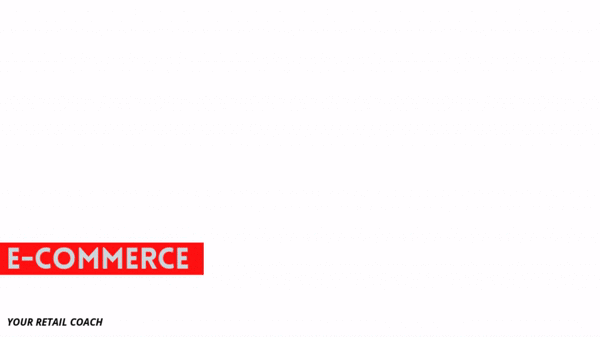
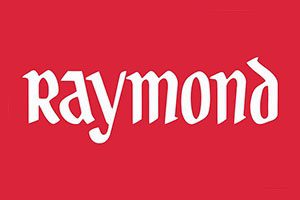
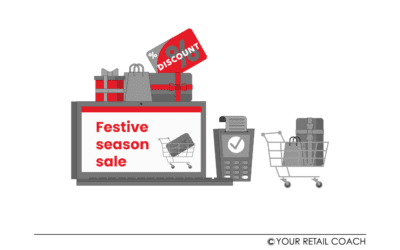
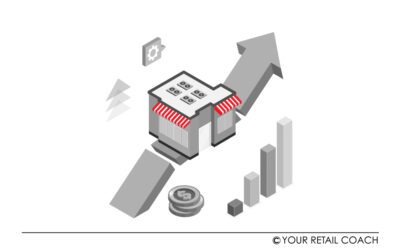

We work only for Visionaries.